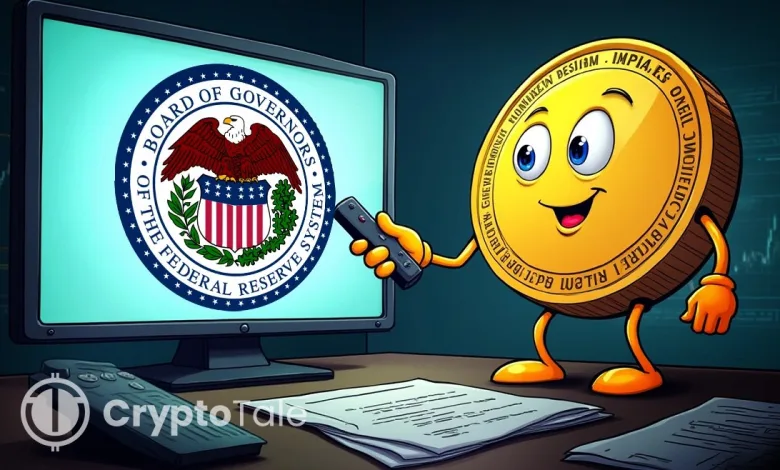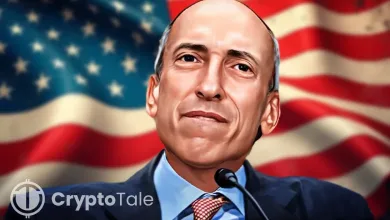Fed to host Oct Summit on Stablecoins, DeFi, AI and Tokenization

- Fed summit set for Oct 21 to spotlight stablecoins, tokenization, and AI in payments.
- Stablecoins now exceed $230B worldwide, pushing Fed to tighten oversight and debate risks.
- Event will unite regulators, banks, and tech leaders to shape the future of payments.
The U.S. Federal Reserve is going to host a big conference on October 21 on the future of payment innovations, with stablecoins at the center stage. The conference would bring together regulators, financial institutions, and technology leaders. The event was announced on Wednesday, and the Payments Innovation Conference would feature a panel discussion on stablecoin business models and developments in tokenization. It would also explore how artificial intelligence could be applied to payments.
The conference would also address the convergence of traditional and decentralized finance. All sessions would be offered live by livestream through the Fed’s website, with more program details to come soon.
Federal Reserve Governor Christopher J. Waller described the conference as part of the Fed’s ongoing effort to balance innovation with safety. He noted that payments have always adapted to changing consumer and business needs. However, he stressed that progress must not compromise stability. Waller said the Fed would be looking at both the opportunities and risks of emerging technology.
Stablecoin Growth, Regulation, and Fed’s Push
More than $283 billion worth of tokens are in circulation globally, with Tether’s USDT and Circle’s USDC leading the way. The tokens have surged on cryptocurrency markets and are becoming more popular as a way of bridging into mainstream finance. Policymakers believe faster payments have potential benefits but risks persist if stablecoins are used to displace banks or straighten out current financial infrastructure.
In July, Congress raised those stakes by passing the first federal stablecoin bill. The legislation provided greater clarity for banks to issue dollar-backed tokens. It was also a substantial shift in the way the U.S. has overseen digital assets. The October conference shows the Fed’s urgency about the need to respond to these regulatory shifts while considering the long-term role of stablecoins.
Fed Calls for Practical Approach to Blockchain and Stablecoins
Fed Vice Chair for Supervision Michelle Bowman has advocated for greater involvement with blockchain and digital assets. She proposed allowing Fed staff to hold small amounts of cryptocurrency in her speech on August 20 in Wyoming. Bowman argued that hands-on experience would enhance regulators’ understanding and aid in attracting top talent. She stressed that true insight comes through practical experience, not just theoretical knowledge.
An overly cautious approach could render the banking system less relevant, according to Fed officials. Regulators are encouraged to collaborate with industry leaders to better understand tokenized assets and blockchain technologies. Blockchain could reduce costs, speed up transfers, and simplify ownership processes.
The October conference is expected to further this important discussion. By targeting stablecoins, the Fed reflects its determination to grapple with challenges in one of the fastest-expanding areas of cryptocurrency. Regulation versus innovation would remain a focus.
Fed Scales Back Oversight of Banks’ Digital Asset Activities
The Fed has revised its approach to digital asset oversight by withdrawing supervisory letters. These letters previously required banks to notify regulators before engaging in stablecoin or crypto-related activities.
Related: Will the GENIUS Act Secure U.S. Stablecoin Global Dominance?
The Fed ended the Novel Activities Supervision Program, which tracked banks involved in stablecoin activities, crypto custody, lending, and fintech partnerships. This move marks a shift in regulatory approach. It reflects a continued relaxation of direct oversight over digital asset activities.
With the explosive growth of stablecoins, the October summit arrives at a critical time. Policymakers are faced with a dilemma to provide regulatory certainty without choking innovation. By convening regulators, banks, and technology leaders, the Fed seeks to direct the payments conversation. The conference could be instrumental in shaping the way digital assets are integrated into the mainstream financial system in the future.





